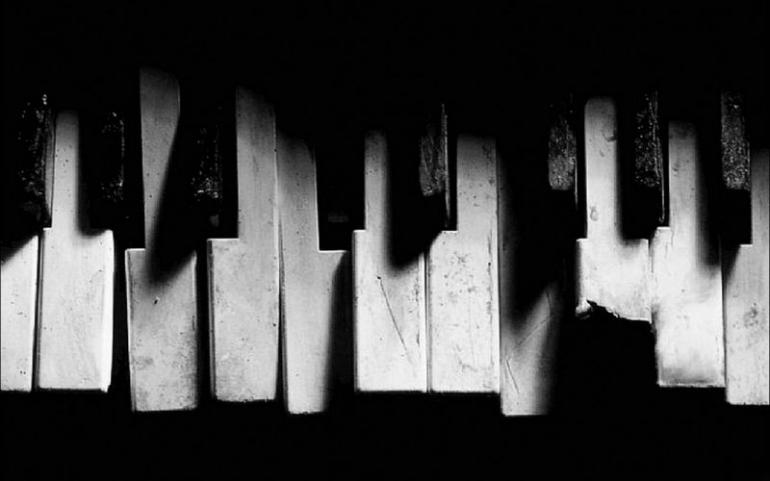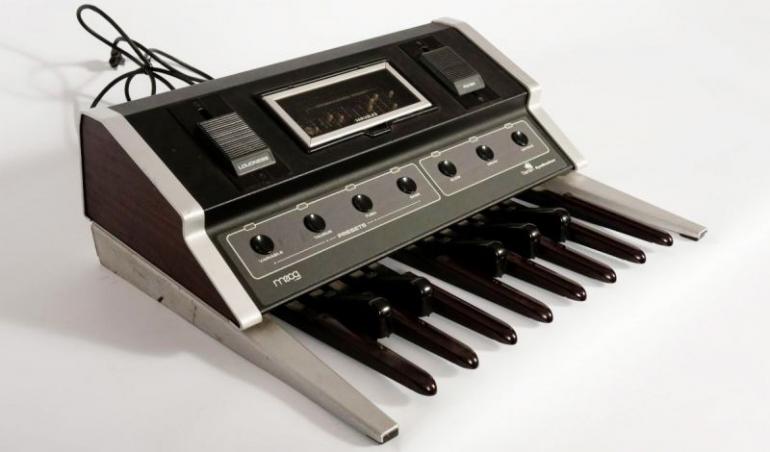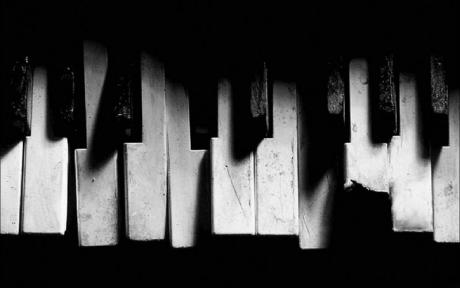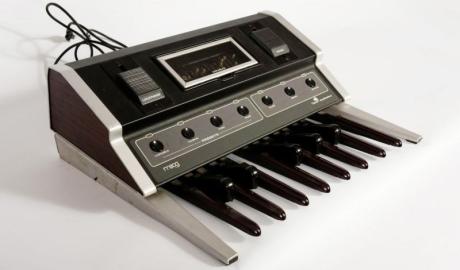Rockové klávesy - Pedály Moog Taurus Bass

Greetings, readers. Welcome to another installment of Rock Keyboards. This month, I wanted to talk about a synthesizer that you play with your feet. I’m speaking of none other than the Moog Taurus pedals. The pedals played a huge part in the sound of iconic progressive rock bands like Genesis, Yes and Rush. Geddy Lee of Rush is especially known for his use of the pedals. Lee has stated in interviews that he used the pedals to fill in the bass while playing guitar chords behind Alex Lifeson's solos. This use illustrates the main function of the pedals; to free up musicians hands to play other instruments while playing the bass with the feet.
The Taurus (I, II, and III) pedals
The original Taurus pedals were introduced in 1975 and stayed in production until 1981. The Taurus I was a monophonic synth with one
sawtooth oscillator and a clear plastic cover on the controls so they were not moved accidentally while playing the pedals. The Taurus I also introduced the low pass filter that would be on all the other models as well. The Taurus I had three preset slots and one user slot in the way of memory. The Taurus II was in productions from 1981-1983 and was considered to be inferior to the original model. The Model II did feature five more pedals and an elevated control box that was manipulated with the hand instead of the foot. The unit also had another pulse wave oscillator that gave more variation to the tomes created. Unfortunately, the unit had no memory, so saving patches was impossible. The Taurus III released in 2010 and in production for only two years. The Taurus III was to the Moog Rouge synth in terms of sound and went back to many original design features. The most modern Taurus pedals also supported MIDI and USB.

The three-keyboard system that never was
The Taurus pedals were originally intended to be part of three instrument set up called the Constellation. In addition to the Taurus, there was also the monophonic keyboard called the Lyra and a polyphonic keyboard called Apollo. This setup was used heavily on the great Emerson, Lake, and Palmer album, Brain Salad Surgery. The super group used the rig when they toured the album, but for some reason the top two keyboards were never commercially released. The Apollo was reworked with the help of Moog engineer, David Luce, and released as the now very sought after, Polymoog.
Taurus a very popular addition to progressive rock bands
The Taurus pedals have always been popular with progressive rock bands. Because of the complexity of the music and the fact that many of the groups have between 4-6 members. The pedals are almost like having another band member. As a keyboardist that often plays solo electronica and Hammond Organ, I can’t say how helpful it is for me to have bass tones at your feet to free your hands up.
Here are a few great videos about the pedals:
Geddy Lee talking about the Taurus Pedals:
https://www.youtube.com/watch?v=T8uWrP1uD9U
... another great video about pedals:
https://www.youtube.com/watch?v=tBoMc-nwLWM
Glossary
Z dnešního článku jsem vybral následujících šest výrazů. Některé výrazy, jako třeba rig, jsme si už vysvětlili v minulých vydáních, můžete se k nim případně vrátit.
Inferior: Inferior znamená podřadný nebo také horší. V článku slovíčko najdeme ve větě: The Taurus II was in productions... Tedy: Taurus II byl vyráběn mezi lety 1981 až 1983 a byl považován za horší než originální model. Inferior jako přídavné jméno může znamenat také podřízený, ve smyslu sociálního statusu nebo kvality. Podstatné jméno podřízený bychom do angličtiny přeložili jako subordinate.
Elevated: Asi vás napadlo, že to bude něco se zdvihem, protože znáte slovo elevátor, česky zdviž, výtah. Ano, máte pravdu, elevated znamená zvýšený. Můžete se s ním setkat ve spojení elevated platform, zdvihací (montážní) plošina nebo zvýšené (vestavěné) patro, ale třeba také elevated temperature, tedy zvýšená teplota.
Patches: Patch je náplast nebo záplata. Možná jste toto slovo viděli i ve spojení eye patch, tedy klípec přes oko, stereotypní poznávací znamení pirátů. Patch se ovšem používá i pro označení místa v paměti přístroje, kam se uloží nastavení parametrů.
Toured: Slovo tour je nejčastěji používané jako podstatné jméno. Znamená koncertní šňůru. Ale v angličtině je velmi běžné, že se jedno slovo, někdy dokonce zcela beze změn, použije jako podstatné jméno nebo sloveso, někdy dokonce i jako přídavné jméno. Angličtina tak může velmi efektivně vyjádřit jedním slovem to, co v češtině musíme opsat. V článku pak: The super group... Tedy: Superskupina tuto sestavu (nástrojů) používala, když byla na propagačním turné k desce, ale horní dva klávesové nástroje se z nějakého důvodu nikdy komerčně nenabízely.
Sought after: Jde o minulý čas, respektive v tomto článku přesněji o příčestí minulé, nepravidelného slovesa seek (after). Seek znamená hledat. Seek after pak vyhledat, často se používá v pasivní formě. Sought after označuje něco, co je populární, co je vyhledávané, ceněné.
Free your hands up: Free jako přídavné jméno znamená volný, svobodný. Lze použít i jako sloveso, osvobodit. Free up pak uvolnit (pro jinou činnost).




